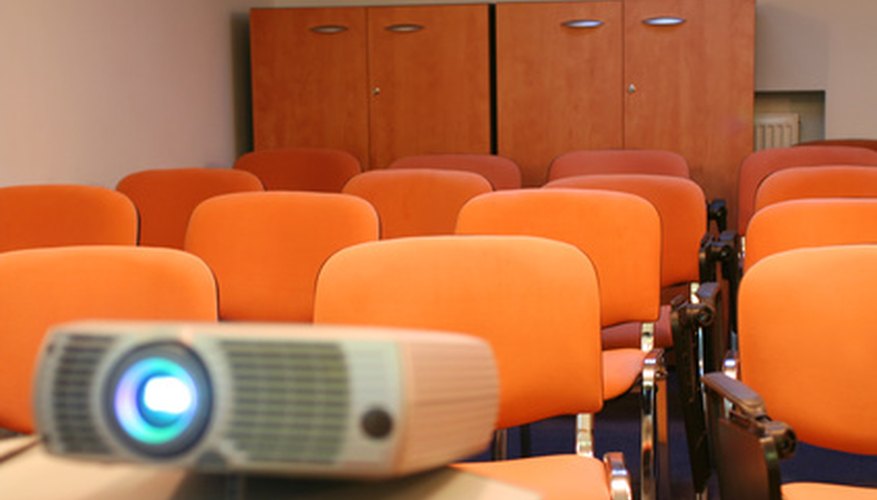Knowing the disadvantages of projector technology is the first step in choosing a medium that works for you. Projectors fall into three main categories: Liquid Crystal Display (LCD), Digital Light Processing (DLP) and Liquid Crystal on Silicone (LCOS) projection technology. Each technology uses its own manner of reproducing images and thus comes with its own distinct disadvantages. However, there are also several common problems that all projectors share.
Set-up
Setting up a projection system is sometimes complicated and cumbersome for novices. Careful attention to the instruction manual is necessary for proper usage. Placing a projection screen too far from or too close to the projector causes image distortion. Front-facing projectors are sensitive to any light that falls on the projection screen, causing images to appear washed out; therefore, projectors are best utilised in very dark rooms.
- Setting up a projection system is sometimes complicated and cumbersome for novices.
- Placing a projection screen too far from or too close to the projector causes image distortion.
Visual Effects and Distortion
Unwanted visual effects and image distortions are common problems among projectors. For example, some models of LCD projectors produce a "screen door" effect. The screen door effect is the pixilation of the picture due to the low resolution of the LCD projector; therefore, the lower the resolution of a particular LCD system, the worse the effect is.
Furthermore, LCD projectors have problems reproducing true blacks. This disadvantage is due to the way the projector produces colour. Essentially, colour is produced by the amount of white light that passes through a liquid crystal pixel. Since there is always some amount of white light passing through the crystals, blacks tend to appear in low contrast.
While DLP technology avoids these common LCD problems, some viewers may experience what is commonly referred to as the "rainbow effect" in DLP projection. The rainbow effect is the result of the separation of colours as the colour wheel moves among a series of moving mirrors. According to ConsumerReports.org, these flashes of light can be distracting, especially when bright objects are contrasted with dark backgrounds.
- Unwanted visual effects and image distortions are common problems among projectors.
- While DLP technology avoids these common LCD problems, some viewers may experience what is commonly referred to as the "rainbow effect" in DLP projection.
As the technology behind LCOS projectors builds upon both LCD and DLP projection, it suffers from a combination of the disadvantages of both technologies. Notably, contrast ratios in LCD projection tend to be lower than those of LCD and DLP technologies.
Maintenance
Because the functionality of LCD projectors depends upon working lamps and LCD panels, proper care must be taken to ensure good performance. For this reason, most LCD projectors require the use of filters to keep the system free of any air particles that might obstruct light as it passes through the liquid crystals.
Over time, all LCD panels experience degradation, causing colour balance problems and a loss of contrast. A short lamp life is also a common complaint. Thus, proper maintenance of LCD projectors tends to increase the operating cost.
Like LCD projectors, LCOS projectors also suffer from a limited lamp life. Getting these lamps replaced may prove difficult and expensive. While DLP bulbs tend to last longer than LCD and LCOS lamps, they still need to be replaced depending on the number of hours specified by the manufacturer.
- Because the functionality of LCD projectors depends upon working lamps and LCD panels, proper care must be taken to ensure good performance.
- While DLP bulbs tend to last longer than LCD and LCOS lamps, they still need to be replaced depending on the number of hours specified by the manufacturer.
